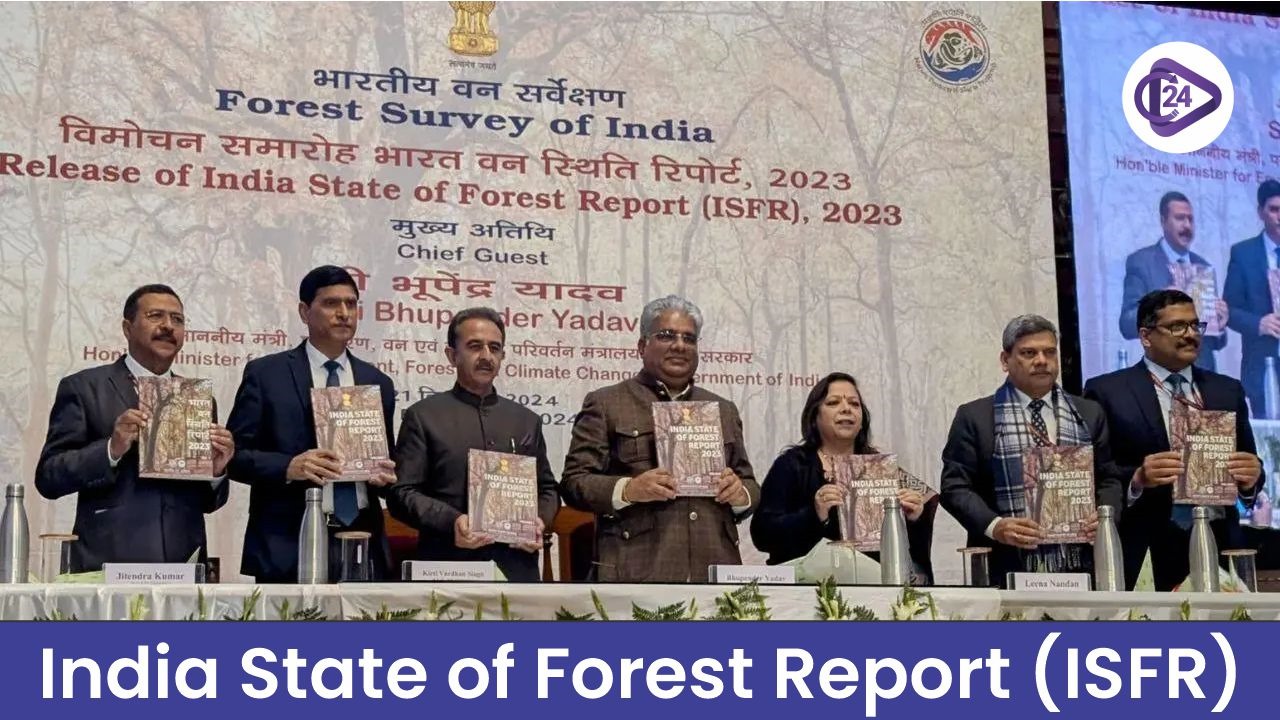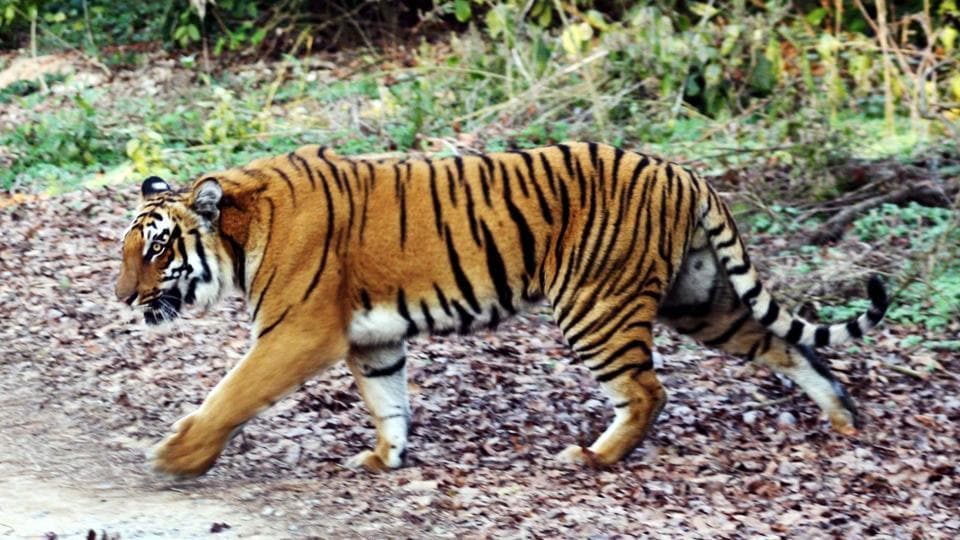
The ISFR 2023 published by the Union Minister Bhupender Yadav is a remarkable step for combating India’s forest resource inventory. The above report summarizes the state of forests and trees growth, mangrove vegetation, growing stock, carbon stock and of the numerous other significant data on the status of the country’s forests. Major findings include a net gain of 1,445 sq km of forest and tree cover since 2021 from the previous year particularly from Chhattisgarh, Uttar Pradesh and Odisha.
After analyzing, the report reveals an increase in India’s carbon stock is improving climate goals to 7,285.5 million tonnes. Also, in bamboo bearing areas, potential of timber production has enhanced showing the importance of trees outside forest. The report also highlights India’s ambition to realize its NDC goals in carbon storage.
The major organization entrusted with the task of generating report on forest is the Forest Survey of India (FSI) and the India State of Forest Report (ISFR) gives a comprehensive account of forest stocks. The latest available State of India’s Forest report is for the year 2023 by FSI-India . The ISFR 2023 report represents the most recent state of forest cover in India, along with statistical and other relevant data regarding the country’s forest resources, the state of the forests and their protection.
The National Forest Policy (1988) in the country provides direction with a vision of forest and tree cover of at least one third of the total land area of the country. The policy further envisages that in the hills and in mountainous regions, it should be the policy to preserve two-third of the area under such cover in order to avoid erosion.
What is forest cover?
Forest Cover is defined as follows: “All areas with tree cover having canopy density of greater than or equal to 10% and having an area greater or equal to 1 hectare.” It may be situated in recorded forest, or on other Government, private or Institutional lands.
What is tree cover?
Tree Cover is defined as follows: “Tree Cover includes Woody vegetation Resources in patches and individual trees outside the RFA on blocks of less than one hectare.”
About Forest Survey of India Report
-
FSI had initiated biennial assessment of India’s Forest Cover since 1987 by using remotely sensed data.
-
FSI has been evaluating the tree cover since year 2001.
-
The results of these assessments are documented in detail in the biennial series of the India State of Forest Reports (ISFRs).
-
For the record, seventeen cycles of FCM have been efficiently conducted so far and the present ISFR is an eighteen in this stream.
-
This is the 11th assessment for Tree cover.
ISFR 2023 Report key findings
|
ISFR Report 2023 |
||
|---|---|---|
|
Forest Cover |
7,15,342.61 |
21.76 |
|
Tree Cover |
1,12,014.34 |
3.41 |
|
Total Forest and Tree Cover |
8,27,356.95 |
25.17 |
|
Scrub |
43,622.64 |
1.33 |
|
Non Forest |
24,16,489.29 |
73.50 |
|
Geographical Area |
32,87,468.88 |
100.00 |
Increase in Forest and Tree Cover
Total forest and tree cover together have gone up by 1,445 sq km from the condition recorded in the previous year assessment and it includes 156 sq km of forest cover and 1289 sq km of tree cover.
Top States with Maximum Increase
Chhattisgarh had the highest additional forest area of 684 sq km adding to the list is Uttar Pradesh with 559 sq km Odisha with 559 sq km and Rajasthan with 394 sq km.
States with Largest Forest and Tree Cover:
Among the states, Madhya Pradesh has the largest area under forests and trees 85,724 sq km, Arunachal Pradesh( 67,083 sq km), Maharashtra (65,383 sq km only).
States with Largest Forest Cover:
The highest forest cover in the country is reported by the
-
Madhya Pradesh at 77,073 Sq km,
-
second largest in Arunachal Pradesh at 65,882 Sq km and
-
the third largest in Chhattisgarh at 55,812 sq km.
Forest Cover as Percentage of Geographical Area:
Among the states,
-
Lakshadweep has the highest percentage of forest cover with 91.33%,
-
second by Mizoram at 85.34% and
-
third by Andaman & Nicobar Islands at 81.62%.
Thus, presently, 19 states/UTs have more than 33 % of the geographical area under the forests, out of them eight states having the forest cover more than 75%.
Mangrove Cover:
Total Mangrove cover in India: 4,991.68 sq km or 0.15% of the geographical size of the country.
Breakdown of Mangrove cover:
-
Very Dense Mangroves: 1,463.97km² of the total area with 29.33% of cover.
-
Moderately Dense Mangroves: 1,500.84 km² (30.07%).
-
Open Mangroves: 2,026.87 km² (40.60%).
-
Change in Mangrove cover: It is still lower by 7.43 KM² from the total area assessed in 2021.
Regional changes
-
Andhra Pradesh: Expanded by 13 sq km because of the natural regeneration and planting campaigns, as well as preservation in Krishna, Bapatla, and Kakinada districts.
-
Maharashtra: Grown by about 4506 hectare because of natural reproduction and state managed plantation schemes particularly in Raigarh and Palghar region.
-
Gujarat: Decreased by 36 km²
Growing Stock
The assessed total growing stock of forest and trees outside forests is 6,430 million cubic meters, which is 262 million cubic meters higher than in the previous assessment.
Total growing stock: 6,429.64 M m³ total growing stock.
-
An estimated 4,478.89 M m³ was filled inside Reserved Forest Areas (RFA).
-
Outside RFA (TOF) was $1,950.75 M m³.
Increase in growing stock:
-
Total increase: 262.Central: 32 M m³ (4.25%) less in comparison with ISFR 2021.
-
Increase inside forests: 90.92 M m³ (2.07%).
-
Increase outside forests (TOF): 171.40 M m³ (9.63%).
Bamboo Bearing:
The actual area under bamboo in India is 1,54,670 sq km, the growth having been recorded at 5,227 sq km.
Timber Production:
TE-produced trees outside the forests contributed to a potential annual timber yield of 91.51 million cubic meters.
Carbon Stock
-
The carbon pool stock of Indian forests is about 7,285.5 million tones and this has enhanced to 81.5 million tones than last assessment.
-
By now, India accounts for a total carbon stock of 30.43 billion tones of CO2 equivalent, which in fact means, it is well on course to achieve its intended 2.29 billion tonnes of additional carbon sinks by the year 2030.
Conclusion
Focusing on the ecological value of the forest, the ISFR is useful for policymakers, scholars, and many environmental non-governmental organizations. It supports sustainable forest management, help in preventing and planning conservation activities, and offer important information for India on environment. The positive trends in the rates of forest cover and carbon stock are evidence of the nation’s efforts towards protecting natural resources for the welfare of the people, as well as the fight against climate change effects.
Chat With Us



 Supreme Court Directs Policy Formation for Sacred Groves Conservation
Supreme Court Directs Policy Formation for Sacred Groves Conservation India’s first-ever tagging of dolphins in the river Ganga was conducted in Assam.
India’s first-ever tagging of dolphins in the river Ganga was conducted in Assam. Jalvahak Scheme: Revolutionizing Inland Waterways in India
Jalvahak Scheme: Revolutionizing Inland Waterways in India India Leads with World's First Green Steel Taxonomy
India Leads with World's First Green Steel Taxonomy Ratapani Tiger Reserve Declared Madhya Pradesh
Ratapani Tiger Reserve Declared Madhya Pradesh Siberian Crane Migration to Khichan Rajasthan Record
Siberian Crane Migration to Khichan Rajasthan Record Global Climate Change Conference India Role Climate Justice
Global Climate Change Conference India Role Climate Justice Cyclone Fengal Tamil Nadu Sri Lanka Impact Forecast
Cyclone Fengal Tamil Nadu Sri Lanka Impact Forecast COP29 India Concerns Climate Finance Rejection
COP29 India Concerns Climate Finance Rejection






